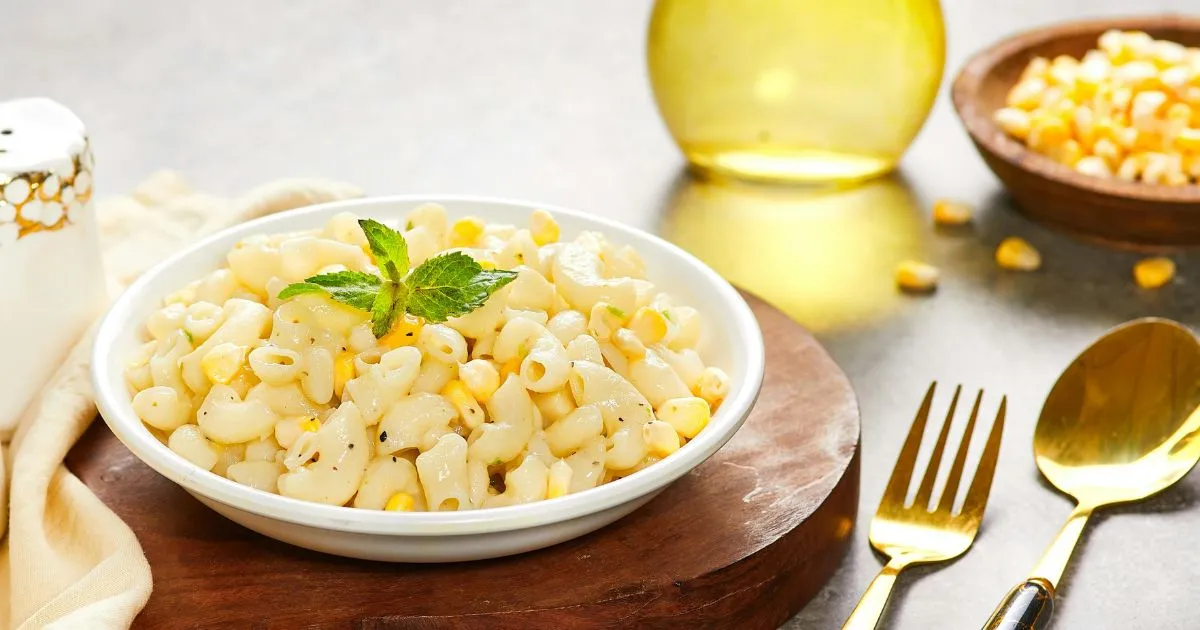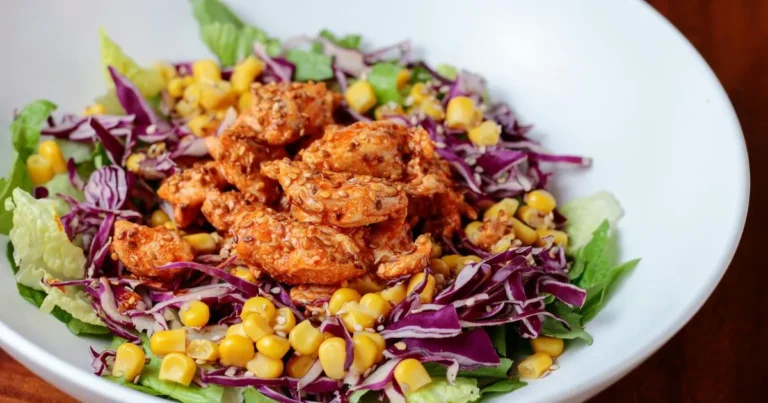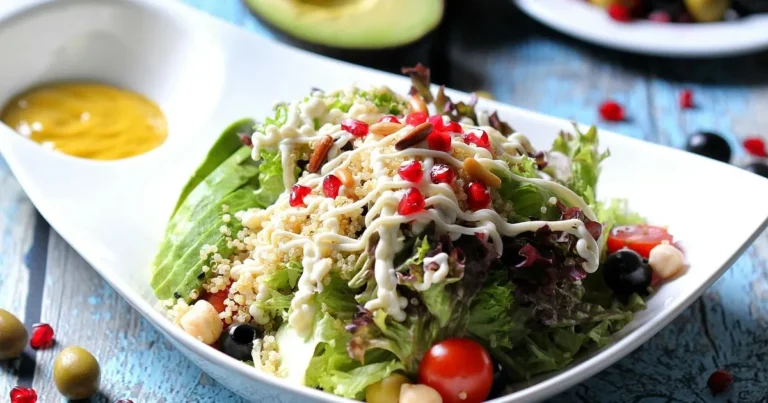How Many Calories in Mac and Cheese? Quick Breakdown
Table of Contents
How Many Calories in Mac and Cheese? Quick Breakdown
Mac and cheese calories is a favorite comfort food in the United States. Knowing the calories in mac and cheese helps you make better food choices. It’s important whether you’re cooking it at home or eating out.
The calorie count in mac and cheese differs widely. It depends on what you put in it, how you make it, and how much you eat. Whether homemade, boxed, or from a restaurant, the calorie count can differ greatly. People who cook at home or watch their diet want to know what they’re eating.
Key Takeaways
- Mac and cheese calories differ based on preparation method
- Portion size significantly impacts total caloric intake
- Cheese and pasta types influence nutritional value
- Homemade versions offer more control over ingredients
- Restaurant mac and cheese often contains higher calories
Understanding Mac and Cheese Calories Basics
Exploring mac and cheese calories reveals that many ingredients play a role. It’s not just pasta and cheese. It’s a mix of parts that affect its calories.
Cheese Varieties and Caloric Contributions
Various cheeses change the calorie count of mac and cheese. Cheddar, a favorite, has about 110-120 calories per ounce. Mozzarella, lighter, has fewer calories. But Gruyère, rich, has more.
- Cheddar: 110-120 calories per ounce
- Mozzarella (part-skim): 80-90 calories per ounce
- Gruyère: 115-125 calories per ounce
Pasta Selections and Their Energy Values
The type of pasta also matters for mac and cheese calories. Whole wheat and protein-rich pasta change the nutrition compared to white pasta.
| Pasta Type | Calories per Cup |
| White Pasta | 220 calories |
| Whole Wheat Pasta | 180 calories |
| Protein-Enriched Pasta | 190 calories |
Impact of Additional Ingredients
Butter, milk, and seasonings can greatly increase mac and cheese calories. One tablespoon of butter contributes roughly 100 calories. Cream can add even more calories.
- Butter: 100 calories per tablespoon
- Whole milk: 150 calories per cup
- Heavy cream: 820 calories per cup
Knowing these details lets you choose wisely about mac and cheese calories. This way, you can enjoy it without feeling guilty.
Standard Mac and Cheese Calories
Craving mac and cheese? Knowing the calories can guide your diet choices. A typical serving has 250 to 400 calories. This varies based on how it’s prepared and what goes into it.
Here’s how mac and cheese calories vary by preparation:
- Homemade mac and cheese: 300-350 calories per serving
- Boxed mac and cheese: 250-300 calories per serving
- Restaurant-style mac and cheese: 400-500 calories per serving
Several factors influence these calories:
- Cheese type: Cheddar, gouda, and parmesan add to the calories
- Pasta quantity: The amount of pasta greatly affects the calorie count
- Additional ingredients: Butter, cream, and mix-ins boost the calorie count
| Preparation Method | Calories per Serving | Primary Calorie Contributors |
| Boxed Mix | 250-300 | Processed cheese, pasta |
| Homemade | 300-350 | Real cheese, butter, milk |
| Gourmet Restaurant | 400-500 | Premium cheeses, cream, toppings |
“Not all mac and cheese calories are created equal. Your preparation method matters!” – Nutrition Expert
Knowing these calorie ranges lets you enjoy mac and cheese while keeping your diet balanced.
Chick-fil-A Mac and Cheese Nutrition Facts
Chick-fil-A offers a rich and tasty mac and cheese as a side dish. Knowing the calories helps you choose wisely.
Chick-fil-A offers two sizes of mac and cheese. Here’s the essential info on each:
Small Portion Calorie Breakdown
The small mac and cheese has fewer calories. Here’s the scoop:
- 170-180 calories per serving
- 8-10 grams of protein
- It’s creamy with different cheeses
Large Portion Nutritional Information
The large mac and cheese contains higher amounts of calories and nutrients:
- 260-280 calories in the large size
- 12-14 grams of protein
- It has a bit more saturated fat
Comparing Different Sizes
Choosing between sizes depends on your needs:
| Size | Calories | Protein | Approximate Price |
| Small | 170-180 | 8-10g | $2.49 |
| Large | 260-280 | 12-14g | $3.89 |
Pro tip: The large size is a better deal for a bigger side dish.
Homemade vs. Restaurant Mac and Cheese Calories
Where you get your mac and cheese makes a big difference. Homemade and restaurant versions have big differences in calories. This affects how many calories you eat.
Restaurant mac and cheese usually has more calories for a few reasons:
- Larger portion sizes
- Higher-fat cheese blends
- Added cream and butter
- Richer cooking methods
A typical restaurant mac and cheese can have 600 to 1,200 calories. This varies based on where you get it and how much you order. But, making it at home lets you control the ingredients and calories better.
| Mac and Cheese Type | Average Calories | Calorie Range |
| Restaurant Mac and Cheese | 800 calories | 600-1,200 calories |
| Homemade Mac and Cheese | 350 calories | 250-500 calories |
To cut down on calories in homemade mac and cheese, try these tips:
- Use low-fat cheese
- Choose whole wheat pasta
- Use less butter and cream
- Add veggies for extra bulk
Pro tip: Keep track of your ingredients and portion sizes. This way, you can enjoy homemade mac and cheese without worrying about calories. Your wallet and waistline will appreciate it!
Mac and Cheese Calories by Popular Brands
Tracking mac and cheese calories is easier when you know the nutritional content of different brands. Each brand has its own nutritional profile, affecting your daily calorie intake.
Understanding the calorie differences between brands is key. Let’s explore a few well-known brands you might keep at home.
Kraft Mac and Cheese Calories
Kraft mac and cheese is a cherished comfort food across America. A standard serving has about 250-300 calories, depending on the variety.
| Kraft Mac and Cheese Variety | Serving Size | Calories |
| Original Flavor | 1 cup prepared | 260 |
| Thick & Creamy | 1 cup prepared | 280 |
| White Cheddar | 1 cup prepared | 270 |
Velveeta Mac and Cheese Nutrition
Velveeta mac and cheese is creamy and rich, with calories slightly different from other brands.
- Shells & Cheese: Approximately 290 calories per serving
- Reduced Fat Option: Around 250 calories per serving
- Classic Flavor: 270-300 calories depending on preparation
Annie’s Mac and Cheese Options
Annie’s offers organic mac and cheese options with different calorie counts.
| Annie’s Variety | Calories | Organic Status |
| Classic Cheddar | 240 | Yes |
| White Cheddar | 250 | Yes |
| Gluten-Free | 230 | Yes |
Remember, mac and cheese calories can change based on how you prepare it and what you add. Always refer to the nutrition label to get the most accurate details.
How to Make Healthier Mac and Cheese
Making a healthier version of chick-fil-a mac and cheese doesn’t mean losing flavor. You can turn this classic dish into a nutritious meal with smart choices and cooking methods.
Start by changing your chick-fil-a mac and cheese recipe with these tips:
- Swap regular pasta for whole wheat or chickpea pasta to boost fiber and protein
- Use low-fat or reduced-fat cheese to lower calories
- Add vegetable purees like cauliflower or butternut squash for more nutrients
- Choose Greek yogurt instead of heavy cream for a creamy texture with protein
Cooking methods can greatly change your mac and cheese’s nutrition. Try these techniques:
- Bake instead of stovetop cooking to cut down on oils
- Use portion-controlled ramekins to manage serving sizes
- Add roasted vegetables to increase volume without extra calories
When making your chick-fil-a mac and cheese at home, focus on quality ingredients and careful preparation. By making these small changes, you can enjoy a tasty mac and cheese that’s good for your health.
Portion Control and Serving Sizes
Managing mac and cheese calories starts with understanding proper portion control. Your approach to serving sizes can significantly impact your overall nutritional intake and health goals.
Understanding Standard Portions
Typical mac and cheese portions vary widely, which can make tracking mac and cheese calories challenging. A typical serving usually falls between 1/2 and 1 cup and contains about 200 to 300 calories. To help you manage your intake, consider these guidelines:
- Home-cooked mac and cheese: 1/2 cup serving
- Restaurant mac and cheese: 1 cup serving
- Boxed mac and cheese: Follow package recommended serving size
Impact on Daily Caloric Intake
Mac and cheese calories can quickly add up if you’re not mindful. A single serving represents about 10-15% of an average adult’s daily caloric needs. Moderation is key to enjoying this comfort food without derailing your nutritional goals.
Restaurant vs Home Serving Sizes
Restaurant portions often exceed recommended mac and cheese calories by 2-3 times compared to home-prepared servings. When dining out, consider:
- Sharing a portion
- Requesting a half-portion
- Boxing up extra before eating
By understanding mac and cheese calories and practicing portion control, you can enjoy this classic dish while maintaining a balanced diet.
Alternative Low-Calorie Mac and Cheese Options
Craving mac and cheese but watching your calories? You’re in luck! There are many tasty alternatives to enjoy this comfort food without ruining your diet.
Cauliflower mac and cheese is a hit with health-conscious foodies. It replaces pasta with cauliflower, reducing calories while maintaining a creamy, satisfying texture.
- Zucchini noodle mac and cheese
- Butternut squash-based mac and cheese
- Spaghetti squash mac and cheese variations
These veggie-based options bring unique health perks. Zucchini noodles, as an example, are lower in calories and richer in nutrients compared to regular pasta.
| Alternative Option | Calories (per serving) | Key Benefits |
| Cauliflower Mac | 150-200 | Low-carb, high fiber |
| Zucchini Noodle Mac | 120-180 | Low-calorie, nutrient-dense |
| Butternut Squash Mac | 180-220 | Rich in vitamins, creamy texture |
When making these options, use low-fat cheeses and add lean protein. This way, you get a meal that’s both filling and supports your diet.
Common Add-ins and Their Caloric Impact
Choosing add-ins for mac and cheese can greatly affect its calorie count. Some toppings can make the dish very calorie-rich. Others can add nutrients without adding too many calories.
Popular add-ins can change how healthy your mac and cheese is. Knowing their effect on calories enables you to choose wisely.
- Bacon: Adds approximately 43 calories per slice
- Breadcrumbs: Contributes around 15-20 calories per tablespoon
- Shredded chicken: Introduces about 30 calories per ounce
- Extra cheese: Increases calories by 50-100 calories per ounce
Vegetable add-ins are a healthier way to add flavor. Roasted vegetables like broccoli or cauliflower add nutrients without many calories.
| Add-in | Calories per Serving | Nutritional Benefit |
| Spinach | 7 | High in iron and vitamins |
| Diced Ham | 50 | Protein boost |
| Jalapeños | 4 | Low calorie, adds spice |
Watch how much you add and what you choose. A little bit of herbs or protein can make a big difference without adding too many calories.
“Smart add-ins can turn mac and cheese from a guilty pleasure into a balanced meal” – Nutrition Expert
Conclusion
Mac and cheese calories can change a lot. This depends on what you put in it, how you make it, and how much you eat. Knowing this helps you keep your diet balanced.
It’s important to watch your portion size. Restaurant portions are often too big. This can add a lot of calories to your day. By choosing the right ingredients and portion sizes, you can enjoy mac and cheese without harming your diet.
Look for healthier mac and cheese options. Use whole grain pasta and low-fat cheese. Adding veggies can also help cut calories. Just remember, it’s okay to enjoy it in moderation.
Enjoying mac and cheese can be both tasty and healthy. This guide helps you make smart choices. So, go ahead and enjoy your mac and cheese with confidence.
FAQ
How many calories does a small Chick-fil-A mac and cheese contain?
Chick-fil-A’s small mac and cheese contains approximately 270 calories. It’s a good size for a smaller meal without too many calories.
What is the calorie count for a large Chick-fil-A mac and cheese?
A large serving of Chick-fil-A mac and cheese contains about 450 calories. It’s a bigger portion, but it has more calories.
How does Chick-fil-A’s mac and cheese measure up to homemade versions?
Chick-fil-A’s mac and cheese has more calories than homemade versions. Homemade recipes can have 250-400 calories per serving. Chick-fil-A’s version has more calories because it’s made the same way every time.
What are some tips for creating a healthier mac and cheese?
To make mac and cheese healthier, use whole grain pasta and low-fat cheese. Add veggies like broccoli or cauliflower. Use Greek yogurt instead of heavy cream. And watch your portion sizes. These changes can cut down calories a lot.
Are there low-calorie alternatives to traditional mac and cheese?
Yes! Try cauliflower mac and cheese for 150-200 calories per serving. You can also use zucchini noodles, cottage cheese, or make veggie versions. These options deliver creaminess without the extra calories.
How do different kinds of cheese change the calorie levels in mac and cheese?
Cheese type really matters for calories. Lighter cheeses like part-skim mozzarella or low-fat cheddar have fewer calories. Full-fat cheeses like sharp cheddar or gruyère add more calories. Each ounce of cheese adds 100-120 calories.
What is the price of a large mac and cheese at Chick-fil-A?
A large mac and cheese at Chick-fil-A costs between $3.50 and $4.50. Prices can change based on where you are and the restaurant’s prices.
How can I practice portion control with mac and cheese?
Use smaller dishes and portion measurements to keep servings in check. Add veggies to make the dish bigger. And be careful with toppings. A standard serving is about 1 cup, which is 250-300 calories.




